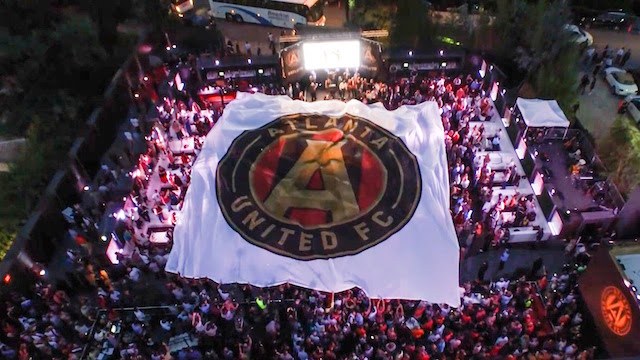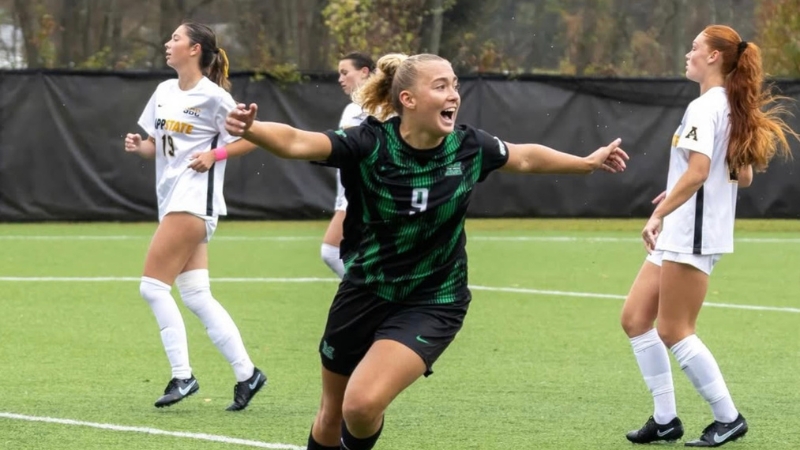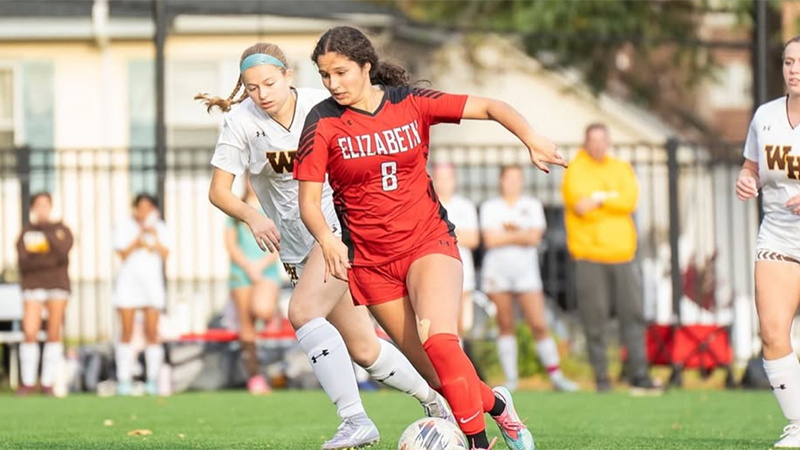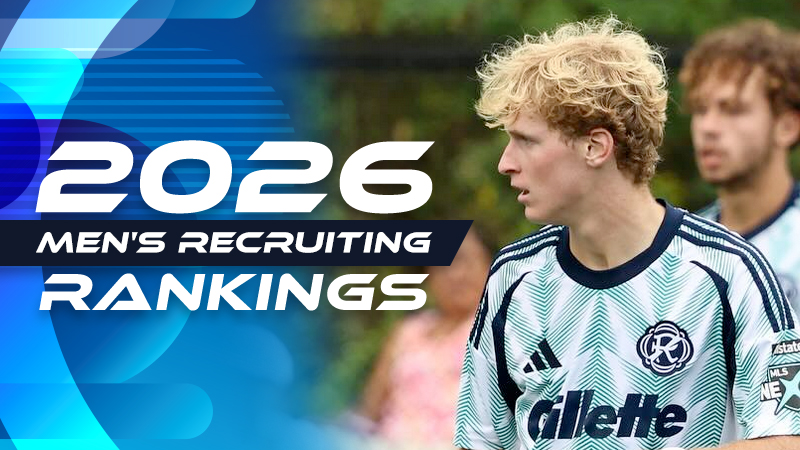How Atlanta United is making academy waves

Last July, eight teams flew into Carson, California for the final grand showpiece of the 2014-15 Development Academy season.
Finals week.
Most of the country’s development pillars were in attendance: Real Salt Lake’s record-breaking U18 team, the New York Red Bulls’ one-loss U16 side, an FC Dallas U16 team jam-packed with U.S. youth national team prospects. In fact, seven of the teams in attendance had MLS status in common, an unsurprising wrinkle in an academy increasingly dominated by its more heavily funded and supported MLS giants.
But there was one non-MLS outlier, hailing from a part of the country without any real wider reputation for player development. Indeed, there was quite a bit about Georgia United that didn’t conform to the narrative.
Georgia United sprang out of the red dirt of the south in 2010, positioned in Atlanta and aiming to change the national discussion about the Deep South’s place in American soccer. Tony Annan, one of the club’s three founders, set the bar high. Five years after its founding, Georgia United pushed its U16 squad into the semifinals of the Development Academy Finals last summer.
It was an outrageously bold achievement, made even more impressive by the fact that the club sent four of its own locally-sourced players to the most recent U17 Men’s National Team camp. No club, MLS representatives included, had more.
Georgia United’s achievement did not go unnoticed.
Georgia United lost to the Red Bulls 2-1 in the DA semifinals. Shortly after the game, the club was approached by Atlanta United representatives with the kernel of an idea. Nobody knew it yet, but Atlanta United was pushing to join the Development Academy for the 2016-17 season, a notion that became an announced reality in October. The only problem was that its infrastructure was lacking, given that it hadn’t yet cobbled together a first team, didn’t have a stadium and was still working on facilities.
Atlanta United technical director Carlos Bocanegra sat down with Annan and the club’s representatives to hash out a bold plan to make the nascent MLS club a player on the local and national academy scene far sooner than anyone imagined.
What if Atlanta United took technical control of Georgia United’s U16 and U18 academy teams for the 2015-16 season, with the goal of absorbing those two teams whole in time for the 2016-17 season?
In the future, Georgia United would continue as a U12, U13 and U14 academy while Atlanta United added readymade nationally successful rosters accruing Homegrown minutes from the beginning of the 2015 season. Beginning this past January, Annan became part of the package deal as the club’s academy manager under recently announced academy director Richard Money.
For Annan, the deal sounded like an opportunity. Since starting Georgia United in 2010, all of its coaches and administrators worked for free, opting to pour the pay-to-play funds they received back into the club.
“You can’t do that forever,” Annan said.
The club still managed to identify and produce top players, including U.S. mega-prospect Andrew Carleton and central midfielder Chris Goslin. Both will likely be in the discussion for starting minutes at next year’s U17 World Cup. But with the added backing of Atlanta United, which recently pledged $60 million to a world class training facility in the Atlanta area, Annan knew they could do even more.
As a result, Atlanta United’s proposal has been in place since the beginning of the academy season. Atlanta United has been in technical control of Georgia United’s U16 and U18 teams, both of which are on track to make the playoffs this June. Georgia United may still be the name on the crest, but every one of its players are banking minutes toward Homegrown status according to Annan. If the math works out, Atlanta United could conceivably pull off a major coup and sign the 16-year-old Carleton to a Homegrown deal before playing its first official match.
At the end of this season, both teams will assume the Atlanta United name and officially kick off the club's academy as a competitive force. One of the shrewdest moves in American academy history took place in quiet.
“I think we thought it was the right thing to do,” Annan said. “We had taken Georgia United pretty much as far as we could resource-wise. We’d tapped every resource we could to make Georgia United work as best it could. Making it to the semifinals last year with that group was pretty much the epitome of what we’d been trying to do. We just felt it was time it got taken to another level that we couldn’t take it to.”
Annan’s deep roots in the community over 20 years of youth coaching in the Atlanta area allow him unique perspective on the incoming might of Atlanta United. While some newer MLS clubs entered markets like a bull, raging into every corner of the coverage area in an effort to dominate the youth space, that won’t be Atlanta United’s aim.
In fact, Annan thinks there’s space in Atlanta’s bourgeoning development landscape for just about everyone, even after Atlanta United moves into the neighborhood.
“I think there will always be a market for pay to play,” Annan said. “There will always be enough kids that want to play the sport where the pay to play model works. I don’t think the MLS club coming into Atlanta is going to change the landscape of that any. In the grand scheme of things, we may 100 kids out of the 60,000 that are registered in Georgia. I don’t think Atlanta United is coming in and destroying the landscape or tearing clubs apart.
“Those 100 kids will be exposed to the most resources anybody can offer,” Annan continued. “Training facilities, full time sports science, nutrition, individual coaching plans, training where the first team trains. I don’t think Atlanta United is in competition with any of the clubs in Georgia. We’re not competing for dollars. We’re not competing for numbers. I don’t think there’s any competition between us and the pay to play clubs.”
As for the potential of Atlanta United, Annan is predictably bullish. He’s seen firsthand the outsized growth of soccer in the non-traditional south, not far from the small Georgia alcove where USWNT staple and 2015 Women’s World Cup winner Morgan Brian was produced in the same stroke as current Seattle Sounder Andy Craven.
Georgia is the home of Clint Mathis, after all, the place that produced one of the greatest and most unpredictable scorers in USMNT history. If Annan is right, Atlanta United is about to tap deeper into a reservoir of talent so rich and unexplored that even he doesn’t know quite how deep it goes.
“The potential I think is untapped. It has no ceiling,” Annan said. “If we can get the diverse pool of players into the best facilities, training with the best coaches, having the best plan of development, I think you’ll see a lot more players coming out of the Georgia landscape than you have already. They’re there, but I think just that whole environment that Atlanta United is creating, from the facilities to the resources that the owner (Home Depot billionaire Arthur Blank) is putting behind the academy. The owner is the one who’s saying he wants his academy to be the best academy.”
Headlines
- Recruiting Roundup: December 22-January 4
- Vote for Men's College Soccer Best Goal
- 2026 Women's Division I Transfer Tracker
- Vote for Women's College Soccer Best Goal
- 2025 TDS Women's College Goal of the Year
-
Men's DI Recruiting Ranks: December

-
Player Rankings Spotlight: 2027 Girls

- 2025 TDS Men's College Goal of the Year
- Club Soccer Player Rankings: Boys 2028
-
Top Uncommitted 2026 Boys Players




